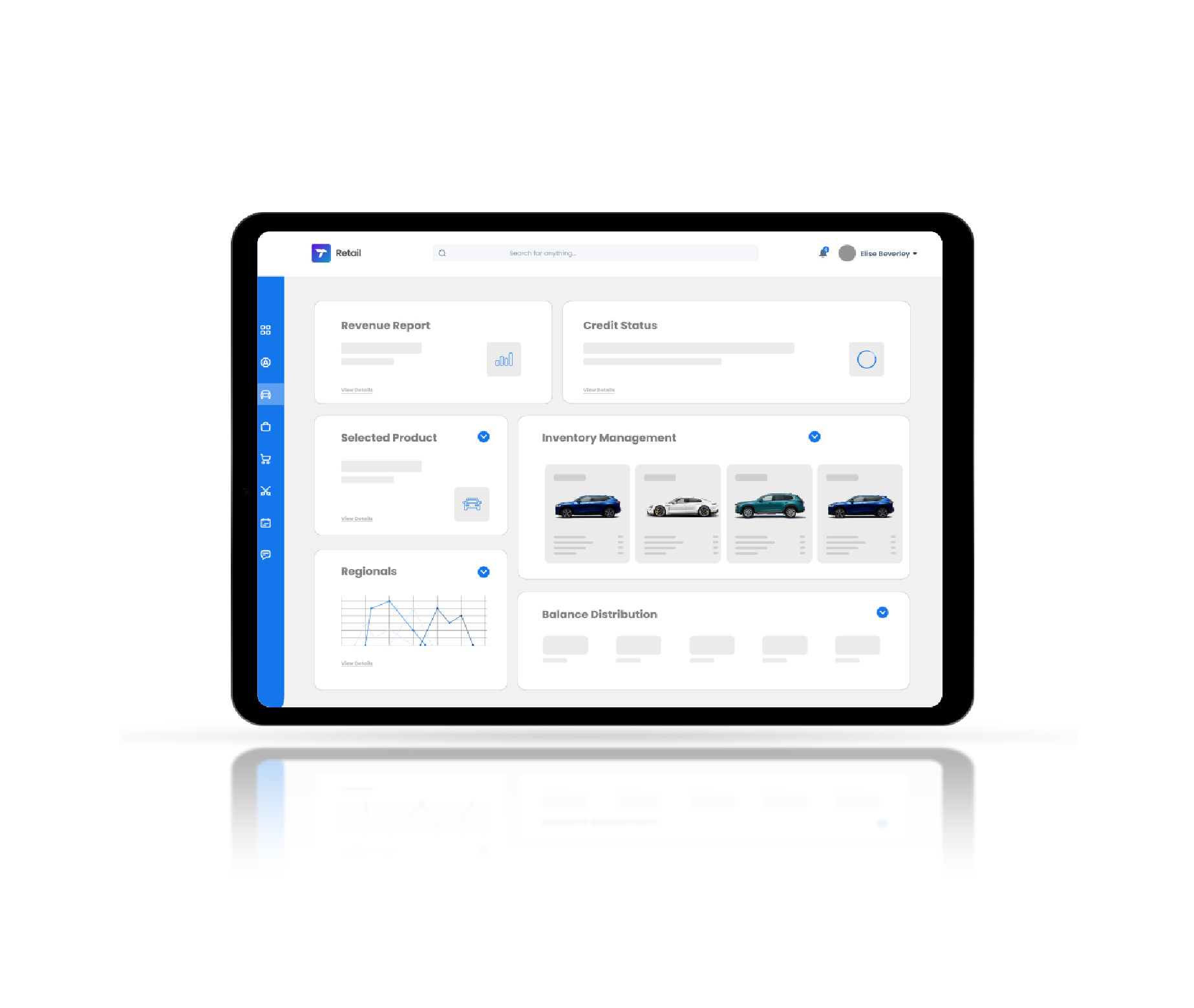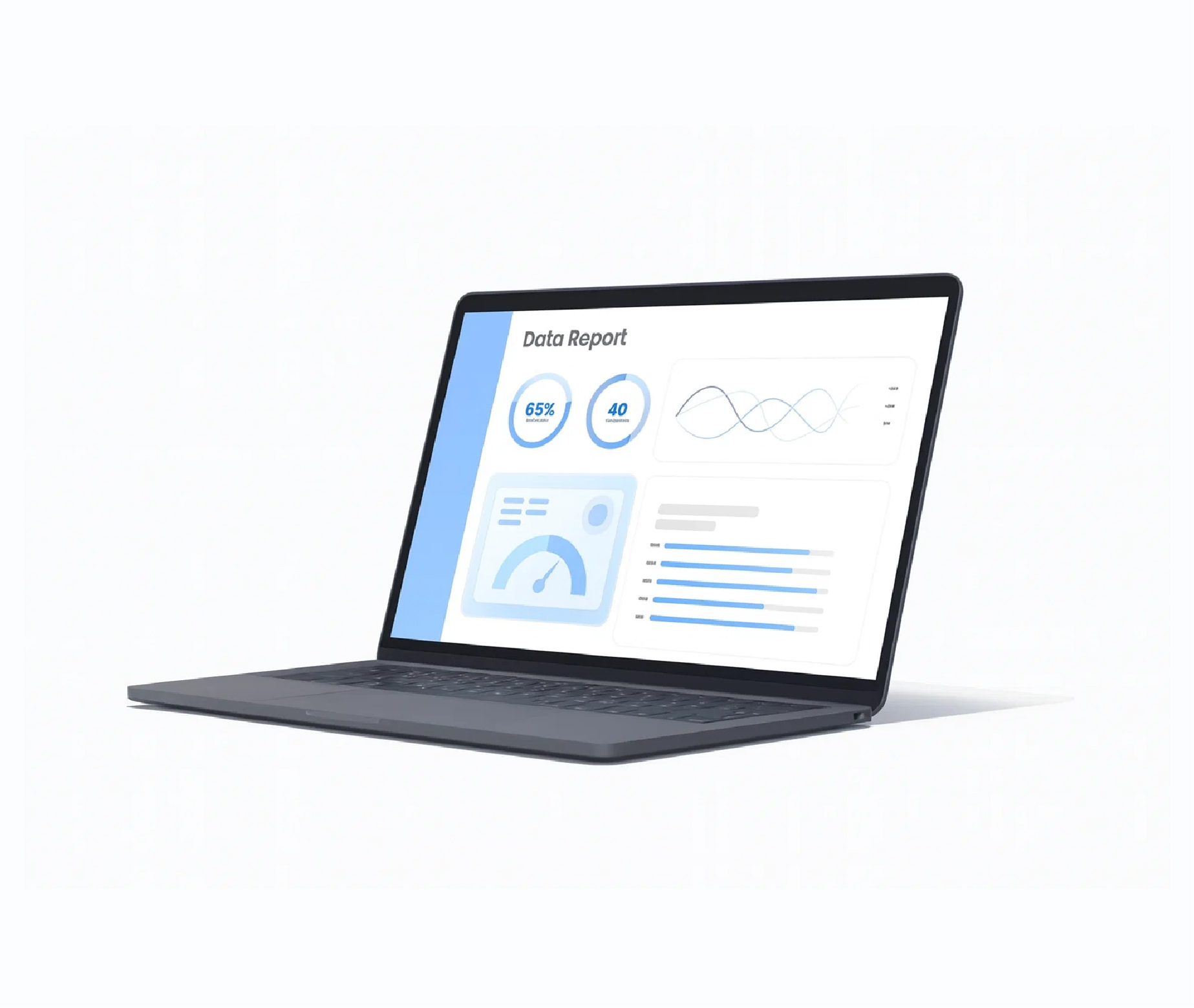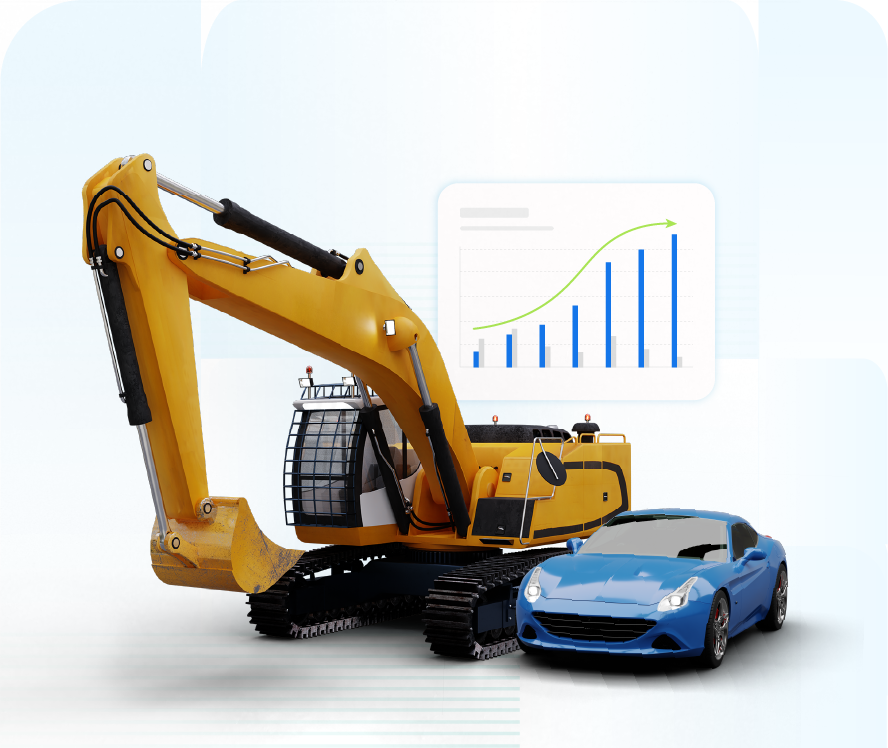Blog
Navigating the equipment finance landscape in Australia: An overview of imperative factors impacting the industry
By Mekayl Mashhadi Ahmed, on June 14, 2023
Navigate Australia's equipment finance landscape with insights on industry trends, challenges, and opportunities for businesses seeking tailored financing solutions.

According to the Australian Bureau of Statistics, equipment leasing and financing facilitates over 40% of total capital expenditure for Australian businesses. This is inclusive of the replacement of current assets in addition to the procurement of new productive assets, demonstrating a significant proportion of total business borrowing for small businesses in particular to finance business equipment.
The Australian Finance Industry Association (AFIA), speculated that as at June 30, 2022, total new equipment finance (including fleet leasing) was A$36.6bn. The country continues to undergo a significant shift in the equipment finance sector with the advent of fintech providers, who heavily leverage digital processes to conduct transactions with their customers. This transformation is spurring competition and driving innovation within the market, thanks to simplified and more efficient application processing, as well as advanced data and asset management capabilities.
Pertaining to business equipment financing, as per lending data derived from the Commonwealth Bank, a record number of businesses in Australia invested in new equipment and machinery in the financial year 2022. During this period, the bank recorded the highest volume of new asset finance lending in its history, with companies in manufacturing, agriculture and production driving demand for machinery and equipment. The list was topped with assets including forklifts (up 49%), trailers (up 37%), cranes (up 26%) and trucks (up 13%).
As per lending data derived from the Commonwealth Bank, a record number of businesses in Australia invested in new equipment and machinery in FY 2022.
Michael Vacy-Lyle, Group Executive, Business Banking at Commonwealth Bank, stated that this growth in the fiscal year 2022 reflected that most entities were still positive about the future, despite the impact of increasing costs and restrictions in supply chain. "Australian businesses have proved resilient as we've adjusted to living with COVID-19," he also stated.
The Influence of Economic Factors
Earlier this month, the largest lender in Australia, the Commonwealth Bank of Australia, projected a 50% likelihood of a recession occurring in the country this year. This forecast is based on the ongoing impact of substantial monetary tightening, which continues to exert pressure on households. According to CBA, the data for the March quarter revealed a contraction in the economy when measured on a per capita basis. While Australia displayed resilience following the unprecedented global health crisis, inflation coupled with higher interest rates has been diminishing purchasing power, as per a report by Deloitte Access Economics.
Several economic factors shape the equipment finance landscape in Australia. The overall strength of the economy, interest rates and government policies significantly impact businesses' borrowing and investment decisions. A favorable economic climate with low-interest rates and government support encourages businesses to invest in equipment and machinery, driving the demand for equipment financing. On the other hand, economic uncertainties and tightening credit conditions may affect the availability of financing options and impact businesses' ability to acquire necessary assets.
Accelerated Digital Transformation
Australia possesses a thriving technology sector and innovation ecosystem. According to Accenture, the technology sector alone contributed a whopping AU$167 billion to the Australian economy in the fiscal year 2021. It is further speculated that technology will contribute a predicted A$250 billion to the economy by 2030. The technology sector is now the third largest contributor to GDP in the country - ahead of health and construction. It continues to grow rapidly and it has expanded by 80% in only 5 years.
Amidst the COVID-19 pandemic, the role of the technology sector has been pivotal in effectively handling Australia's response. As businesses and individuals faced lockdowns, the widespread adoption of software and cloud services played a crucial role in preventing a complete economic standstill and facilitating the provision of services across various key sectors.
AU$167 Bwas contributed to the Australian economy by the technology sector alone in FY 21, according to Accenture.
"During the pandemic, the tech sector generated 65,000 jobs - one of the economy's highest job creators," stated Robyn Denholm, Chair of the Tech Council of Australia. 'While we have a lot of uncertainty across the rest of the economy, technology has succeeded despite this uncertainty. It contributed $167 billion to the economy in FY21, or 8.5% of GDP. Crucially, it is an enabler of all other sectors, helping mining, agriculture, banking and health drive new growth and productivity. Near term, by 2030, the technology sector has the potential to contribute more to GDP than either primary industries or manufacturing,' Ms. Denholm said.
 During the pandemic, the tech sector generated 65,000 jobs - one of the economy's highest job creators. While we have a lot of uncertainty across the rest of the economy, technology has succeeded despite this uncertainty. By 2030, the tech sector has the potential to contribute more to GDP than either primary industries or manufacturing. - Robyn Denholm, Chair of the Tech Council of Australia
During the pandemic, the tech sector generated 65,000 jobs - one of the economy's highest job creators. While we have a lot of uncertainty across the rest of the economy, technology has succeeded despite this uncertainty. By 2030, the tech sector has the potential to contribute more to GDP than either primary industries or manufacturing. - Robyn Denholm, Chair of the Tech Council of Australia
According to a PwC survey conducted in October and November 2022, nearly 90% of CEOs in Australia expressed their intention to invest in upskilling initiatives in 2023. This percentage is higher than that of their global counterparts, with automation and technology as primary areas of focus.
Technological advancements and digital transformation have brought significant changes to the equipment finance landscape. Automation, artificial intelligence and cloud computing have streamlined the equipment financing process, making it more efficient and accessible. Digital platforms and online marketplaces have emerged, connecting equipment finance providers with businesses seeking funding, offering a wider range of financing options and improved transparency.
Equipment finance software and technology solutions streamline the entire process, leading to superior operational efficiency, eliminating any errors and reducing the cost of origination and equipment/asset management throughout the lifecycle.
Automation and the adoption of technology has transitioned from being a 'mere optional addition' to being critical for maintaining efficient business processes. It plays an essential role in driving increased levels of productivity, scalability and agility, while significantly enhancing the experience of both employees and customers. Equipment finance software and technology solutions streamline the entire financing and leasing process, leading to superior operational efficiency, eliminating any errors and reducing the cost of origination and equipment/asset management throughout the lifecycle.
Maximizing Insights through Data Analytics
For a nation that is so distant geographically from other major global hubs and is perceived as remote from the rest of the world, Australia continues to maintain itself as a prominent player in the realm of cutting-edge technology. Known for its ability to innovate, the country has recently emerged as a hub for data analytics.
According to a TechSci Research Report, the Australian data analytics market was forecasted to register a CAGR of 20% from 2020-2025. The essence of data analytics lies in its capacity to effectively and precisely track patterns and trends within vast data sets, enabling more informed decision-making. With the advent of 5G technology, the future prospects of data analytics are truly exhilarating, holding immense potential for further advancements and transformative possibilities.
Data analytics is playing an increasingly vital role in the equipment finance industry. With the abundance of data available, finance providers can leverage analytics to assess creditworthiness, identify trends and make informed decisions. Data-driven insights are enabling lenders to optimize risk management processes, enhance underwriting accuracy and develop tailored financing solutions for businesses and customers.
$20B is the CAGR the Australian data analytics market was forecasted to register from 2021-2025, according to a TechSci Research Report.
Evolving Expectations of Customers
Australia is known for its swift adoption of new technologies, surpassing the pace of many other nations. As the new millennium began, Australia emerged with one of the world's highest rates of internet access. The expansion of technology in the country has yielded significant outcomes, including enhanced opportunities for innovation and design. Moreover, it has facilitated improvements within diverse industries and the financial services sector has been no exception. It has led to the strengthening of existing financial services entities and elevated the quality of their products and services.
Traditional banks and financial institutions face competition from non-bank lenders, fintech companies and specialized equipment finance providers that offer tailored products and faster approval processes.
Businesses' expectations regarding equipment finance have evolved in recent years. They seek more flexible financing solutions that align with their specific needs. Traditional banks and financial institutions face competition from non-bank lenders, fintech companies and specialized equipment finance providers that offer tailored products and faster approval processes. Customers also expect enhanced customer experiences, including streamlined application processes, faster funding decisions and improved accessibility to finance options.
Considerations Pertaining to the Environment and Sustainability
Earlier this year, the Australian parliament passed the most important emissions reduction legislation in over a decade to address pollution arising from prominent industrial sites. This legislation specifically mandates a direct reduction in total emissions emitted by major industrial facilities. This crucial development can be considered key to Prime Minister Anthony Albanese's pledge to reduce national carbon dioxide emissions by 43% by 2030.
Starting from the coming month (July), a significant number of Australia's 215 major polluting facilities, which encompass fossil fuel operations, mines, refineries and smelters, will need to reduce their emissions intensity by 5% annually. Collectively, these facilities contribute to approximately 30% of the country's total emissions.
Sustainability has gained significant importance in the equipment finance landscape. Businesses are increasingly conscious of the environmental impact of their operations and seek equipment financing options that promote sustainability. Financing solutions that encourage the acquisition of environmentally-friendly equipment, such as energy-efficient machinery or renewable energy infrastructure, have gained traction. Financial institutions are incorporating sustainability criteria into their lending practices and offering specialized green finance options.
Regulatory Frameworks and Compliance
The financial services sector stands as one of the most heavily regulated industries. In Australia, equipment finance is governed by various regulatory frameworks and compliance requirements. These frameworks aim to ensure transparency, consumer protection and fair practices within the equipment finance industry. There are a number of key regulatory bodies and frameworks relevant to equipment finance in Australia. The primary regulatory authority overseeing financial services, including equipment finance, is the Australian Securities and Investments Commission (ASIC).
Regulatory frameworks and compliance requirements therefore play a crucial role in the equipment finance landscape. In Australia, equipment finance and leasing companies, banks and other financial institutions must adhere to all the various regulatory guidelines, including responsible lending practices, consumer protection laws and privacy regulations. Additionally, the Australian Prudential Regulation Authority (APRA) oversees the safety and soundness of the banking and financial sector, ensuring that equipment finance providers maintain robust risk management practices and adequate capital buffers.
Obstacles and Opportunities
The equipment finance landscape in Australia presents both challenges and opportunities for businesses and financial institutions. Challenges include adapting to rapidly evolving technology and digital platforms, managing regulatory compliance and addressing the diverse needs and expectations of customers. Financial institutions must also navigate economic uncertainties and changing market conditions, ensuring that they maintain competitive and sustainable financing options.
However, the evolving landscape also offers opportunities for innovation and growth. Technological advancements enable financial institutions to provide more efficient and tailored business equipment financing solutions. Collaboration with fintech companies and leveraging data analytics can improve risk assessment and streamline processes. Offering specialized financing options, such as vendor finance programs or flexible leasing arrangements, can help financial institutions differentiate themselves and meet the evolving needs of businesses.
NETSOL's Dominance in the Equipment Finance and Leasing Industry
This year, NETSOL was selected by Monitor Daily for the THIRD consecutive year in its feature of the 'Most Innovative Companies in the Equipment Finance Ecosystem'. NETSOL has previously been selected for the same recognition in 2021 and 2022 in the 'Sustaining' category, which is defined as companies committed to an industry niche and continuous improvement that are staying at the forefront of innovation and technology change. This recognition illustrates the company's reputation as a premier service provider to the global equipment finance and leasing industry and solidifies NETSOL's dominance in the sector. To read the feature, click here.
NETSOL has been selected by Monitor Daily for the THIRD consecutive year in its feature of the "Most Innovative Companies in the Equipment Finance Ecosystem".
Earlier this year, NETSOL also signed a multi-million-dollar agreement with the finance division of a leading global agricultural and industrial equipment manufacturer based in Japan. The contract relates to its operations in Australia. The client was already using NETSOL's solutions to futureproof its operations in New Zealand. To read the press release, click here.
NETSOL has been proudly serving equipment finance and leasing companies worldwide with equipment finance software and smart technology solutions for over four decades. The company's diverse clientele includes world renowned equipment finance and leasing companies, alongside banks, captives and automotive finance and leasing companies. To explore NETSOL's modern technology solutions for the evolving Australian equipment finance and leasing industry, please click here.
NETSOL's premier platform NFS Ascent is available on the cloud, enabling immediate access to the same unrivalled platform used by bluechip and Fortune 500 companies.
NETSOL's premier platform that futureproofs operations for the Australian and global equipment finance and leasing industry, NFS Ascent, is also available on the cloud, enabling you to gain immediate access to the same unrivalled platform used by bluechip and Fortune 500 companies worldwide via rapid deployments, flexible, subscription-based pricing and the ability to scale on demand. To Contact Us or for a FREE demo of Ascent, click here.
Conclusion
The equipment finance landscape in Australia is undergoing significant transformations driven by evolving market dynamics and technological advancements. As businesses strive to enhance operational efficiency and remain competitive in an ever-changing environment, equipment financing has emerged as a crucial tool for acquiring and upgrading assets.
Equipment finance in Australia is currently influenced by various factors, including economic conditions, technological advancements, customer expectations, sustainability considerations and regulatory requirements. Businesses and financial institutions must navigate these dynamics to seize opportunities for growth and innovation. Adapting to digital transformation, embracing sustainability and delivering personalized financing solutions are key to remaining adaptive and attaining a competitive edge. The integration of digital platforms, the rise of alternative financing options and the increasing demand for flexible and customized solutions are reshaping the industry.
However, challenges such as economic uncertainties, changing regulatory frameworks and the need for robust risk management practices remain. To navigate this landscape successfully, businesses must stay abreast of market trends, collaborate with trusted financing partners and leverage technology to streamline their equipment financing processes. As the equipment finance industry continues to evolve, proactive adaptation and strategic decision-making will be key to capitalizing on emerging opportunities and driving sustained growth in the Australian market.
References
- https://www.eastandpartners.com/research/research-programs/asset-equipment-finance
- https://www.commbank.com.au/articles/newsroom/2022/08/demand-for-equipment-record-high.html
- https://www.capital-markets-intelligence.com/wp-content/uploads/2022/12/Australia-WLY.pdf
- https://afia.asn.au/
- https://www.world-leasing-yearbook.com/wp-content/uploads/2022/12/WLY2023_ebook_noDirectory.pdf
- https://www.dfat.gov.au/about-us/publications/trade-and-investment/business-envoy-april-2021-digital-trade-edition/towards-2030-positioning-australia-leading-digital-economy-and-society
- https://www.globalaustralia.gov.au/sites/default/files/2023-03/Why_Australia_Digital_Technology_2023.pdf
- https://datareportal.com/reports/digital-2023-australia
- https://www.theguardian.com/business/2023/jun/07/australia-in-retail-recession-as-inflation-and-rate-hikes-hit-spending-says-report
- https://www.reuters.com/markets/commonwealth-bank-australia-puts-odds-australian-recession-2023-50-2023-06-09/
- https://www.techsciresearch.com/news/4569-australia-data-analytics-market-to-grow-at-20-until-2025.html
- https://dataagility.com/why-australia-is-a-data-analytics-hub/
- https://ap-unsdsn.org/regional-initiatives/sdgs/transforming-australia-sdg-progress-report/
- https://www.reuters.com/world/asia-pacific/australia-lays-out-plan-make-biggest-polluters-slash-emissions-2023-01-10/
- https://www.reuters.com/business/environment/australia-passes-tougher-emissions-reduction-law-that-hits-gas-investments-2023-03-30/
- https://itbrief.com.au/story/digital-workforce-industry-5-0-to-reshape-australia-in-2023
- https://www.pwc.com.au/digitalpulse/ceo-priorities-for-2023-keeping-up-the-pace-of-business-transformation.html
- https://www.austrade.gov.au/benchmark-report/innovation-skills
Related blogs

Blog
Intelligent deal structuring: The new standard in digital retail platforms

Blog
Transforming BFSI with data engineering: Unlocking actionable insights from big data

Blog



